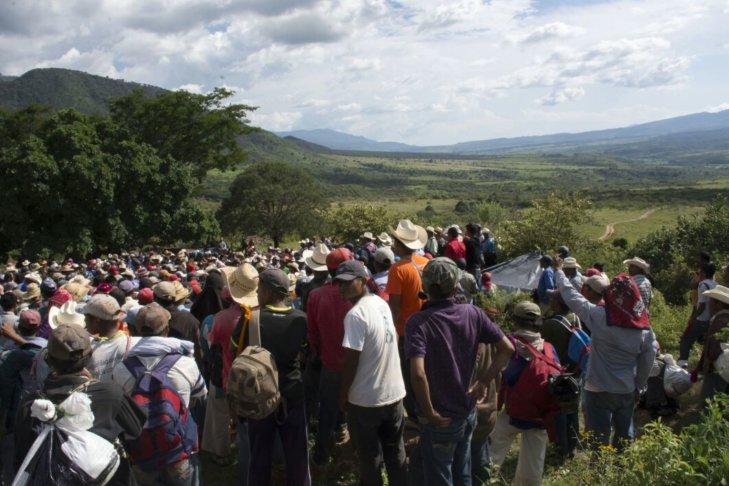Huajimic: The Story of an Inevitable Conflict
"The human avalanche began to flow from the ridgetop of the Sierra de Los Pajaritos around 10 am on Thursday, September 22: 500 indigenous Huichols, heirs to the old lords of the mountains, descended in a quiet tide into the valley Huajimic, in search of historical justice. The expectant landholders, who had succeeded them in the domain of these lands, observed them worriedly as an ominous sign.
It was the beginning of the land restitution most feared by the ranchers: it was just 184 hectares owned by Mrs. Enriqueta Montoya that were turned over by the Agrarian Court 56 of Tepic to the Indigenous Peoples, but it was the first of 47 possible restitutions—all without public law enforcement, as both the state of Nayarit and the federal government had ignored the request of the magistrate to be supported in order to prevent acts of violence.
“We will not intervene with Cosomer [Social Conflicts in Rural Areas] unless there is blood or violence,” Gustavo Cardenas Monroy, the federal undersecretary of agrarian development, had told the lawyer representing the Huichol community, Rubén Ávila Tena.Avila Tena attested to the good intentions of the authorities of Wuaut+a, who had stressed to diverse audiences the need for the government to compensate their adversaries, who have three to five generations inhabiting this inter-mountain valley where they have made livestock thrive, with 7,000 head annually for sale. He alluded to the interviews held in recent months with the official of the Ministry of Agrarian, Territorial and Urban Development (Sedatu), who was reluctant to acknowledge the historical responsibility of the federal government in this land conflict, one of the oldest and riskiest in the national geography.
What was certain was that the process of restitution of the property to the indigenous community of San Sebastián Teponahuaxtlán (Wuaut+a) as a result of the agrarian judgment 769/2012 ended five hours later. The affected ranchers, who fear a domino effect on the execution of judgments favorable to their neighbors, watched with growing impatience the administrative act of the court officials who headed the tribunal, Nereida Ceja and Enrique Ramírez. Between the bureaucracy of Sedatu and the disinterest of those affected, motivated by the government of Nayarit’s position of “not allowing” the “dispossessions,” four years had passed. The federal government has remained on the margin. The riskiest stage of the restitution has begun, without any institutional support that would allow for reconciliation.
Follow link to read full article.






